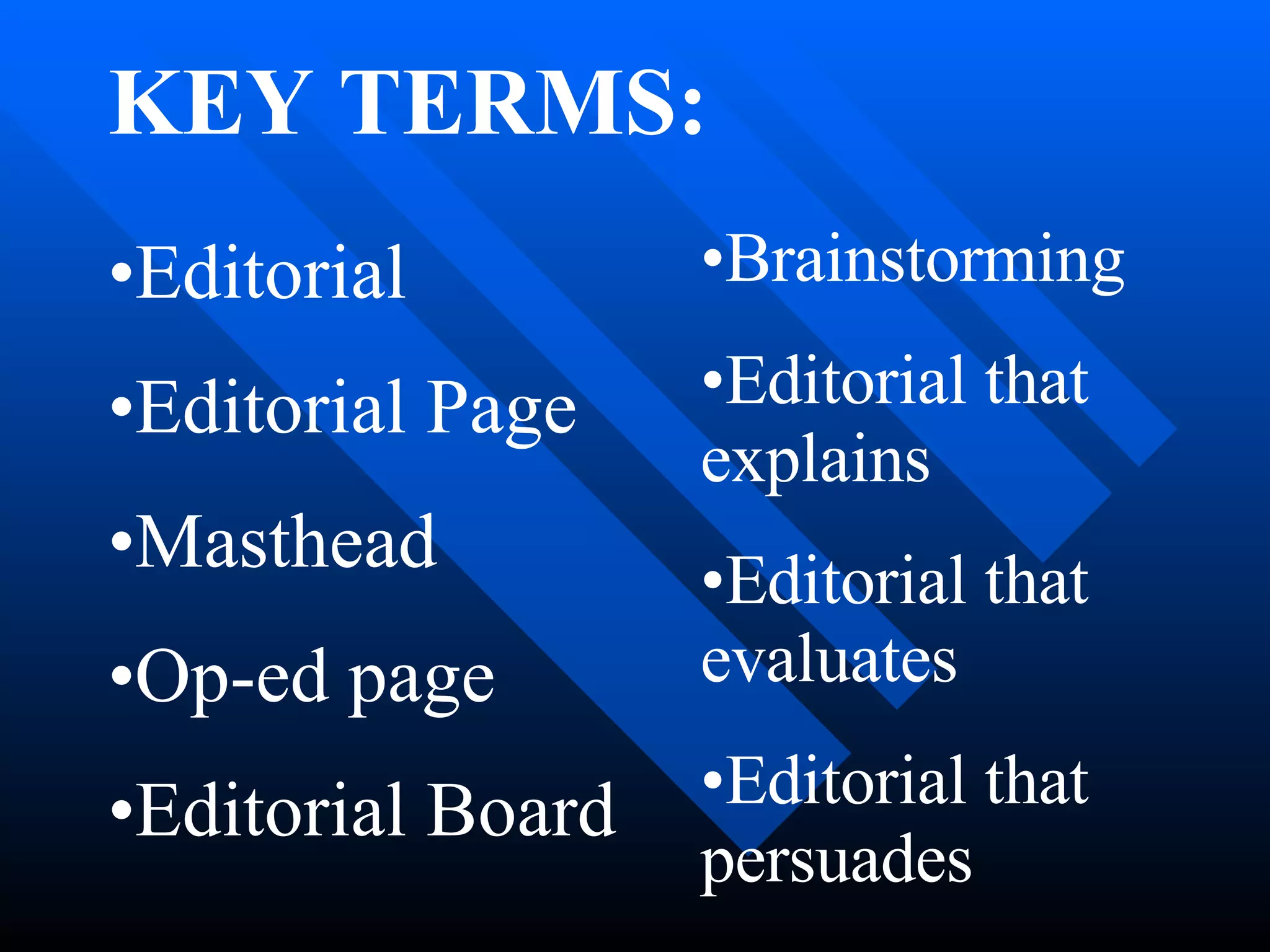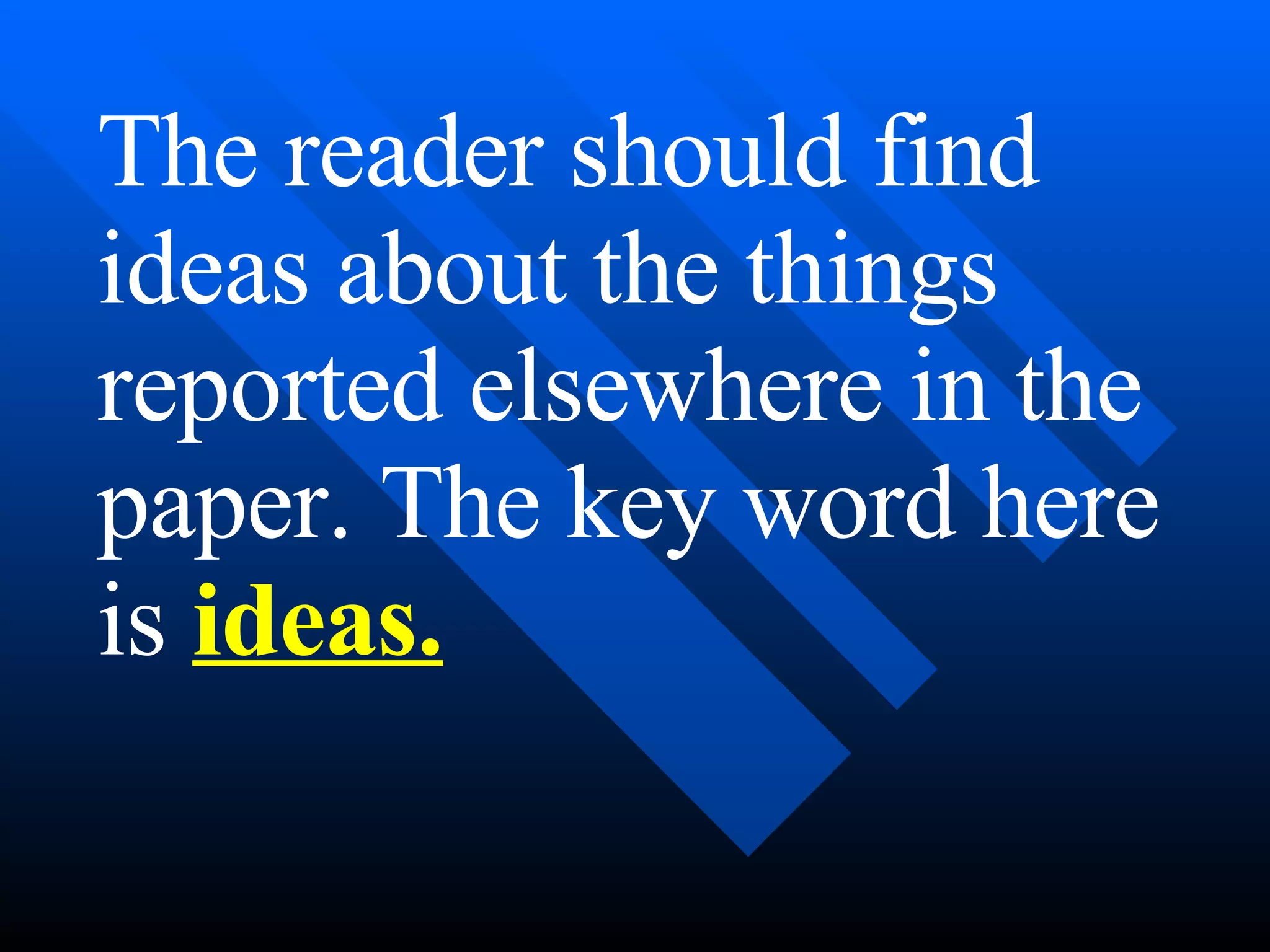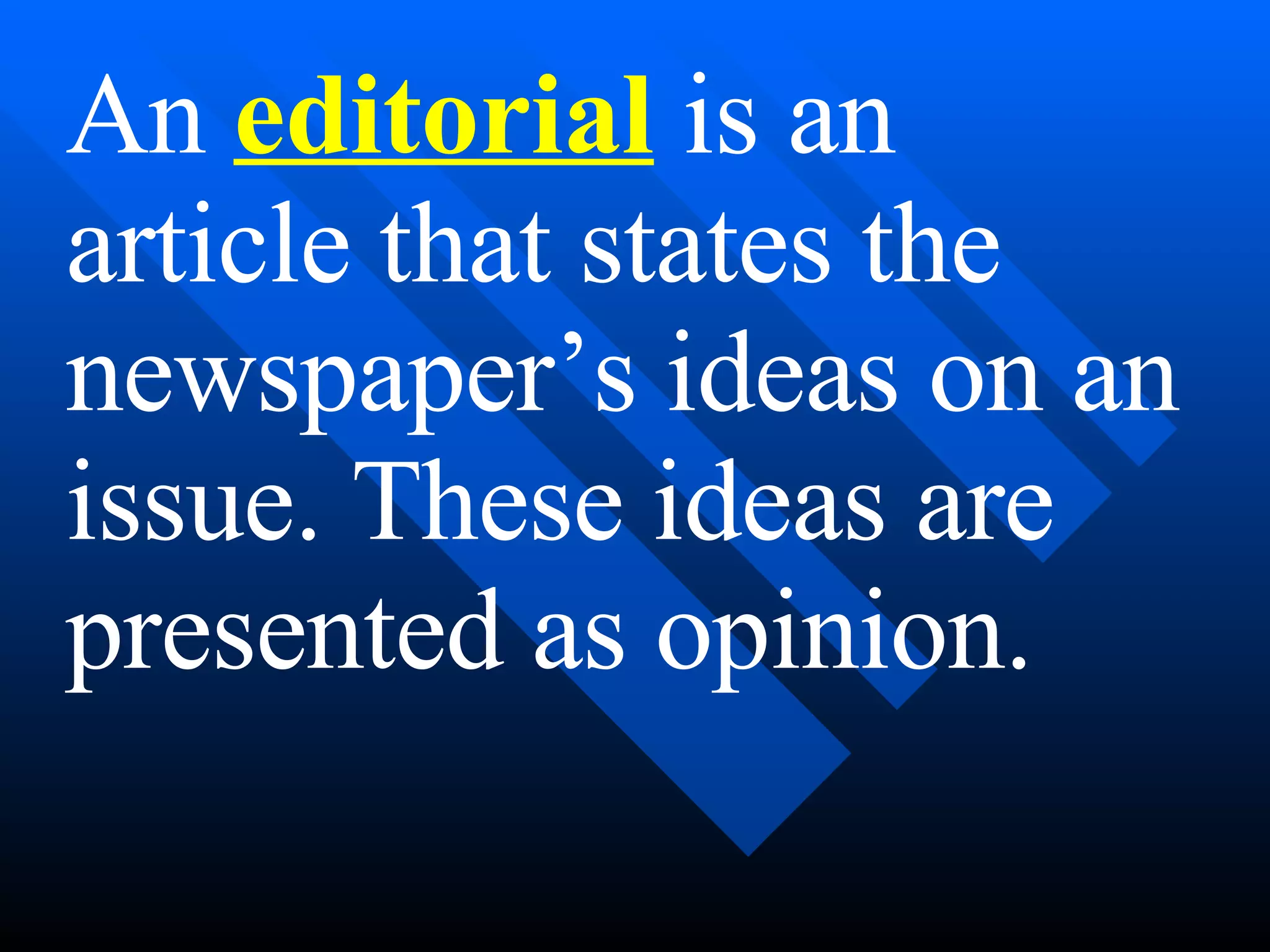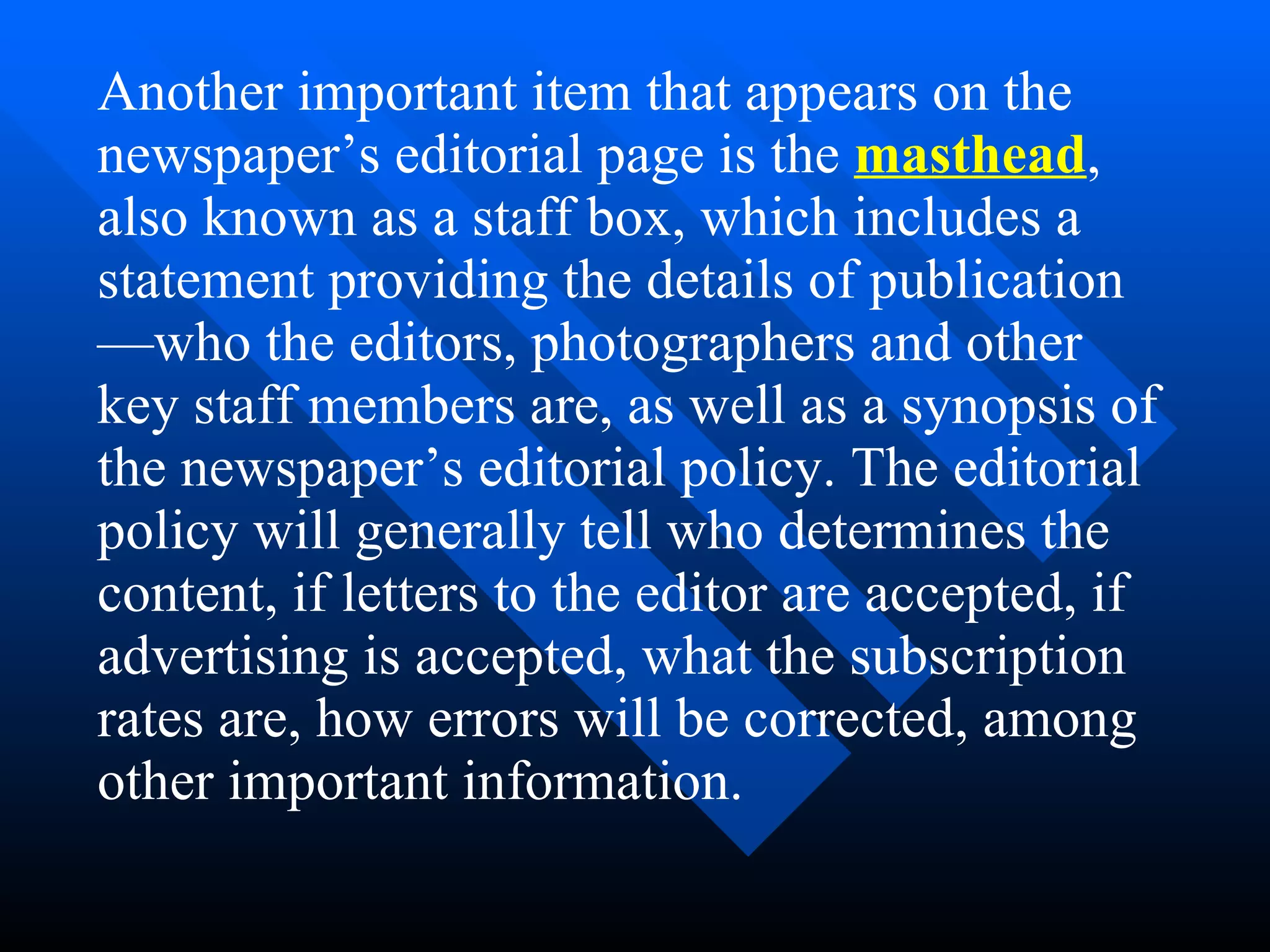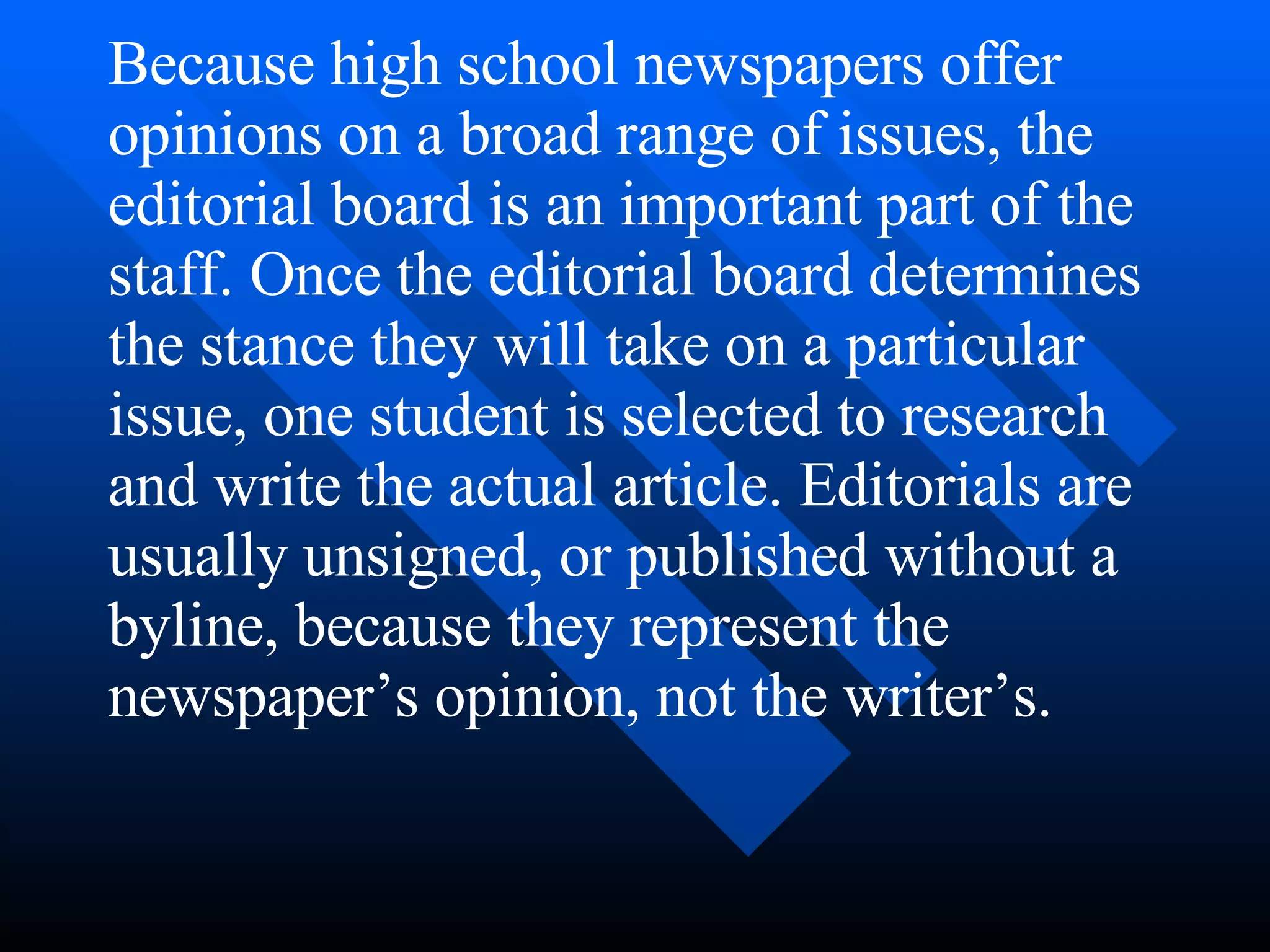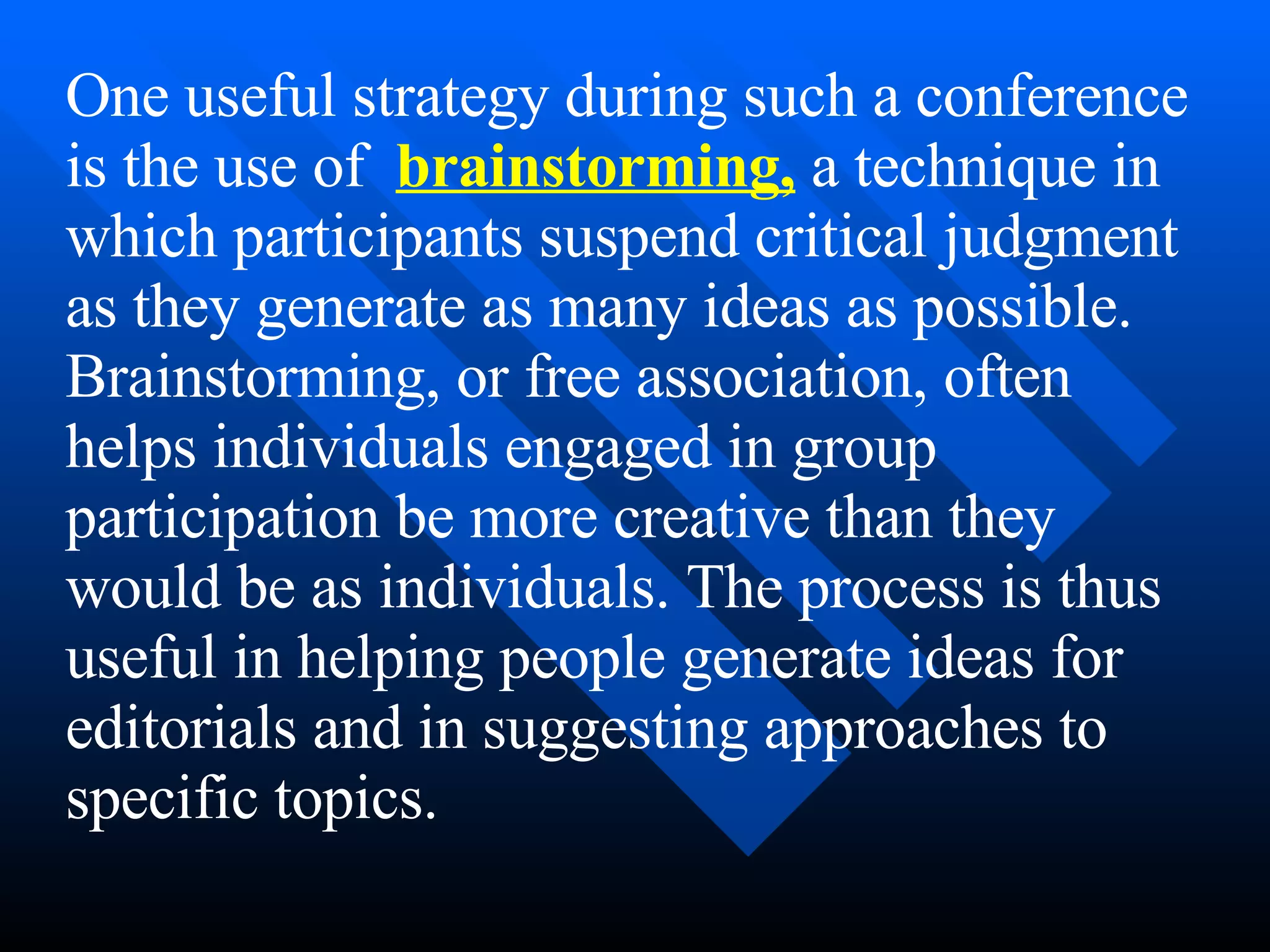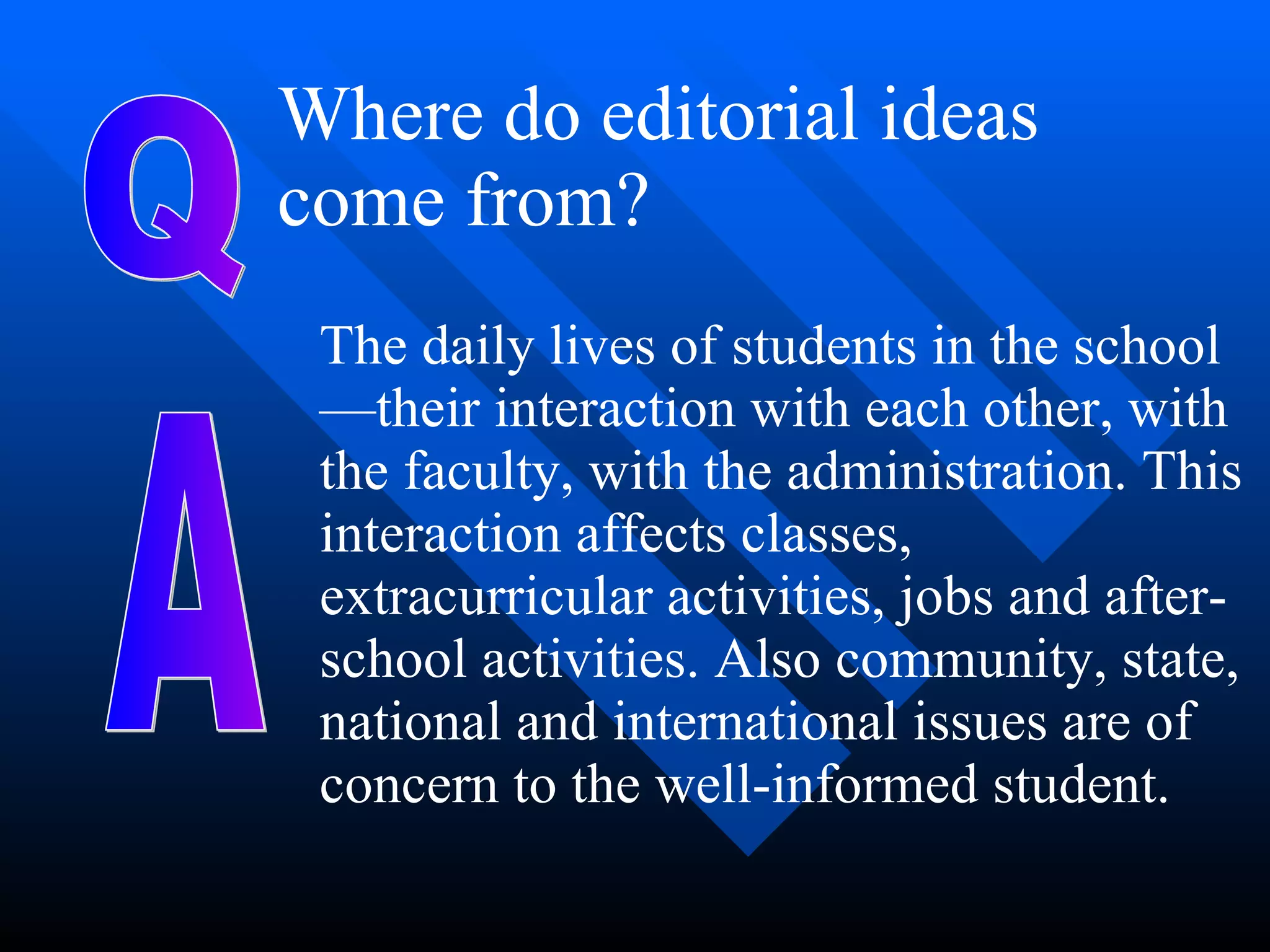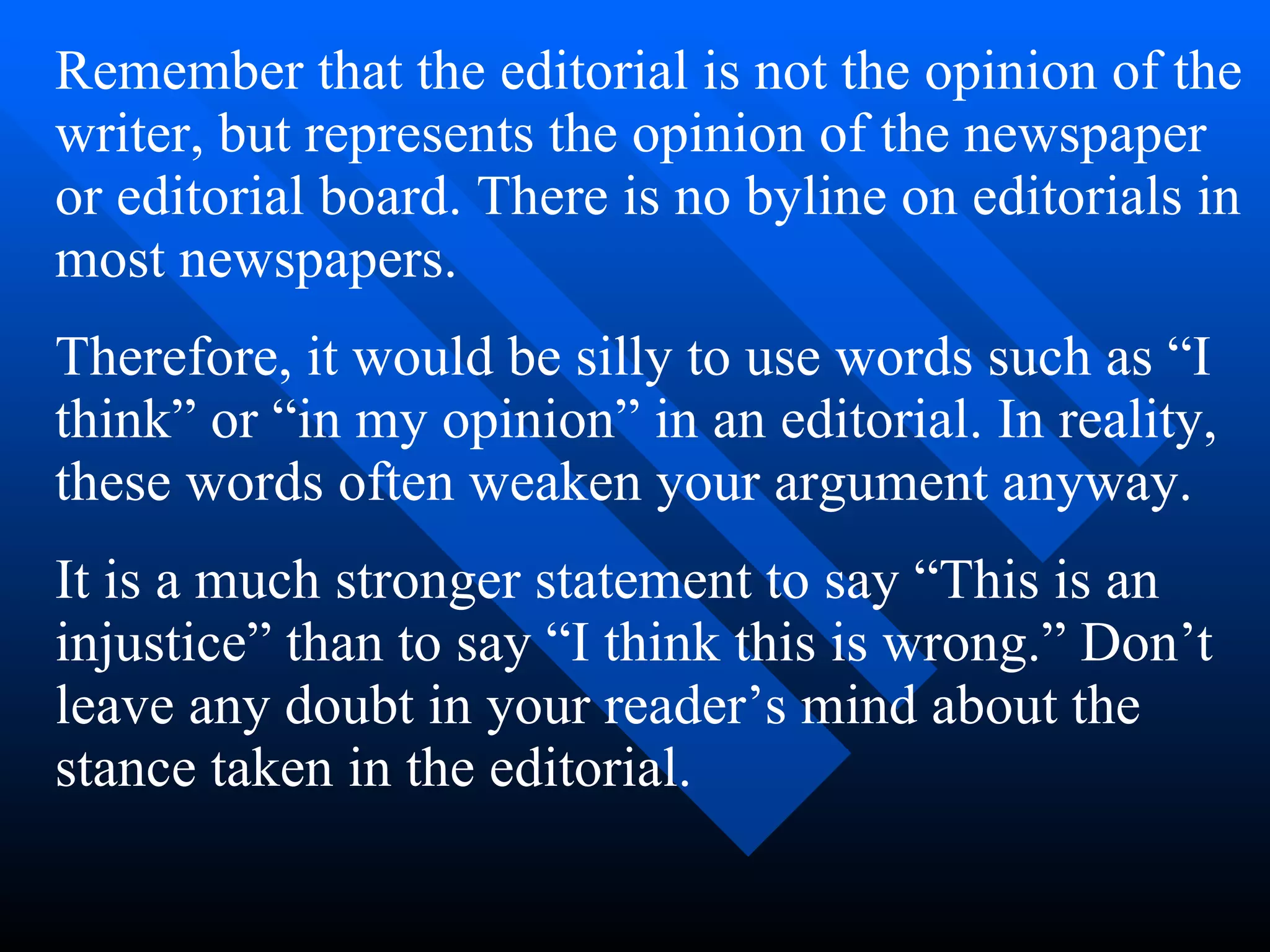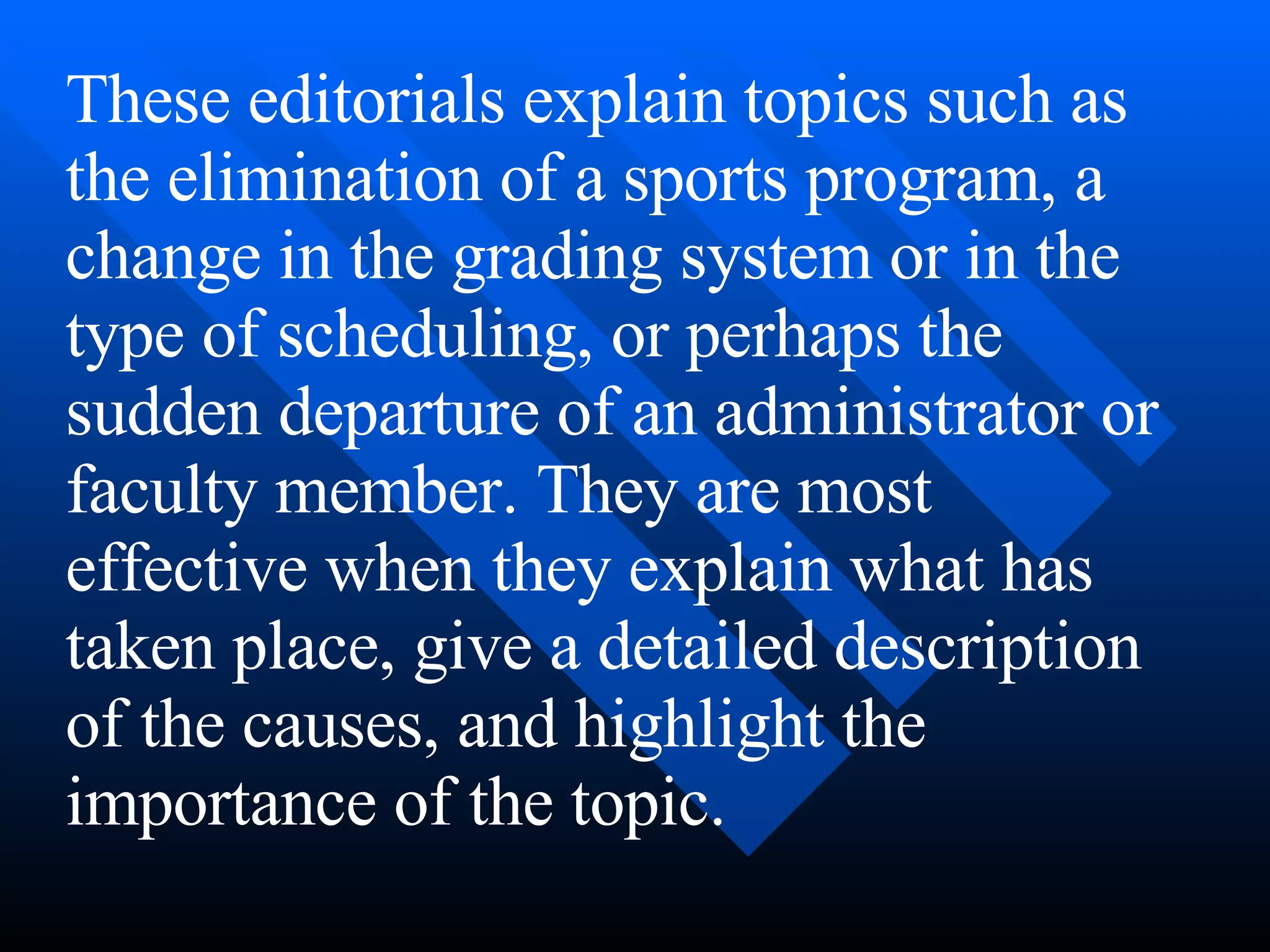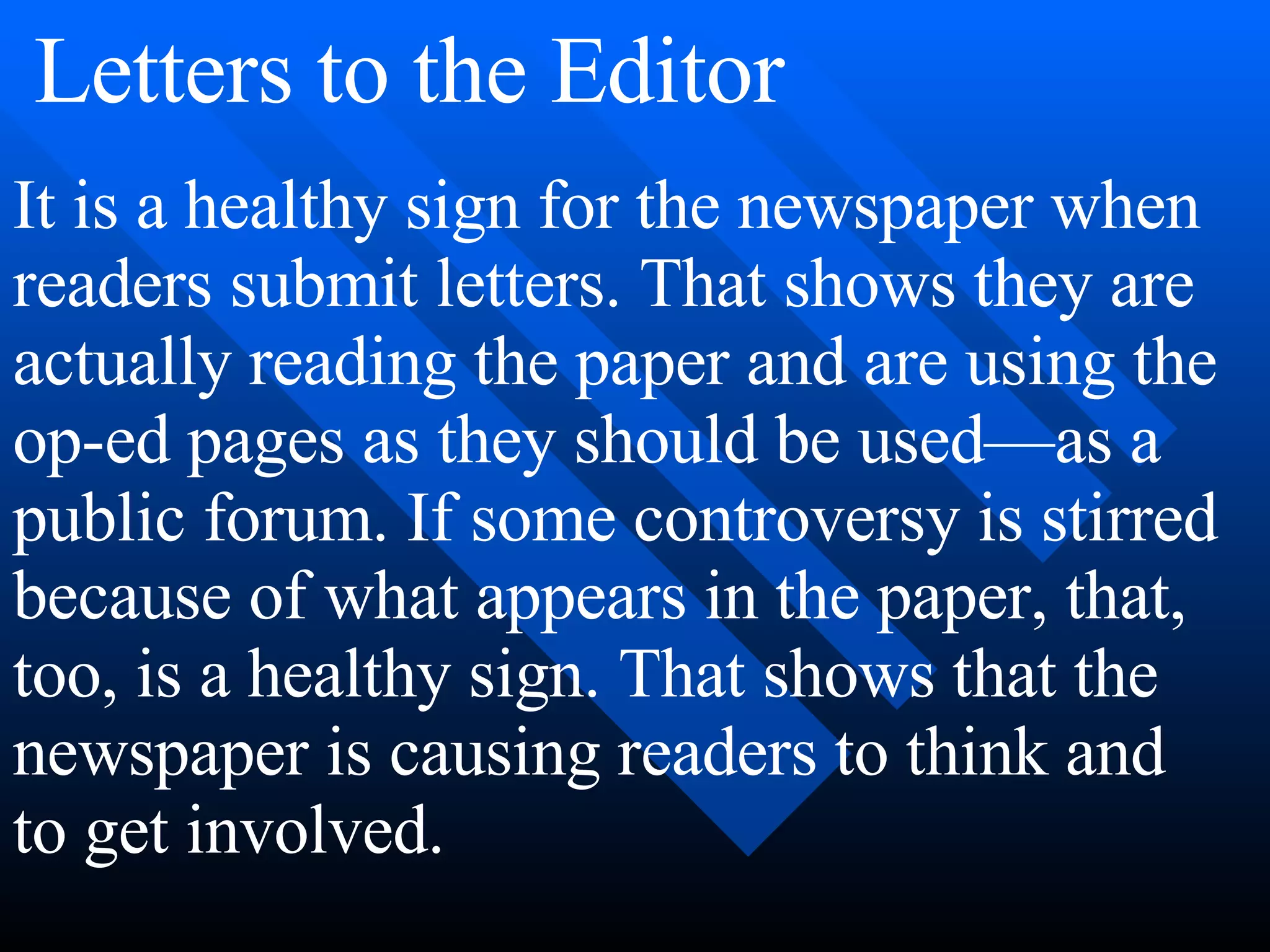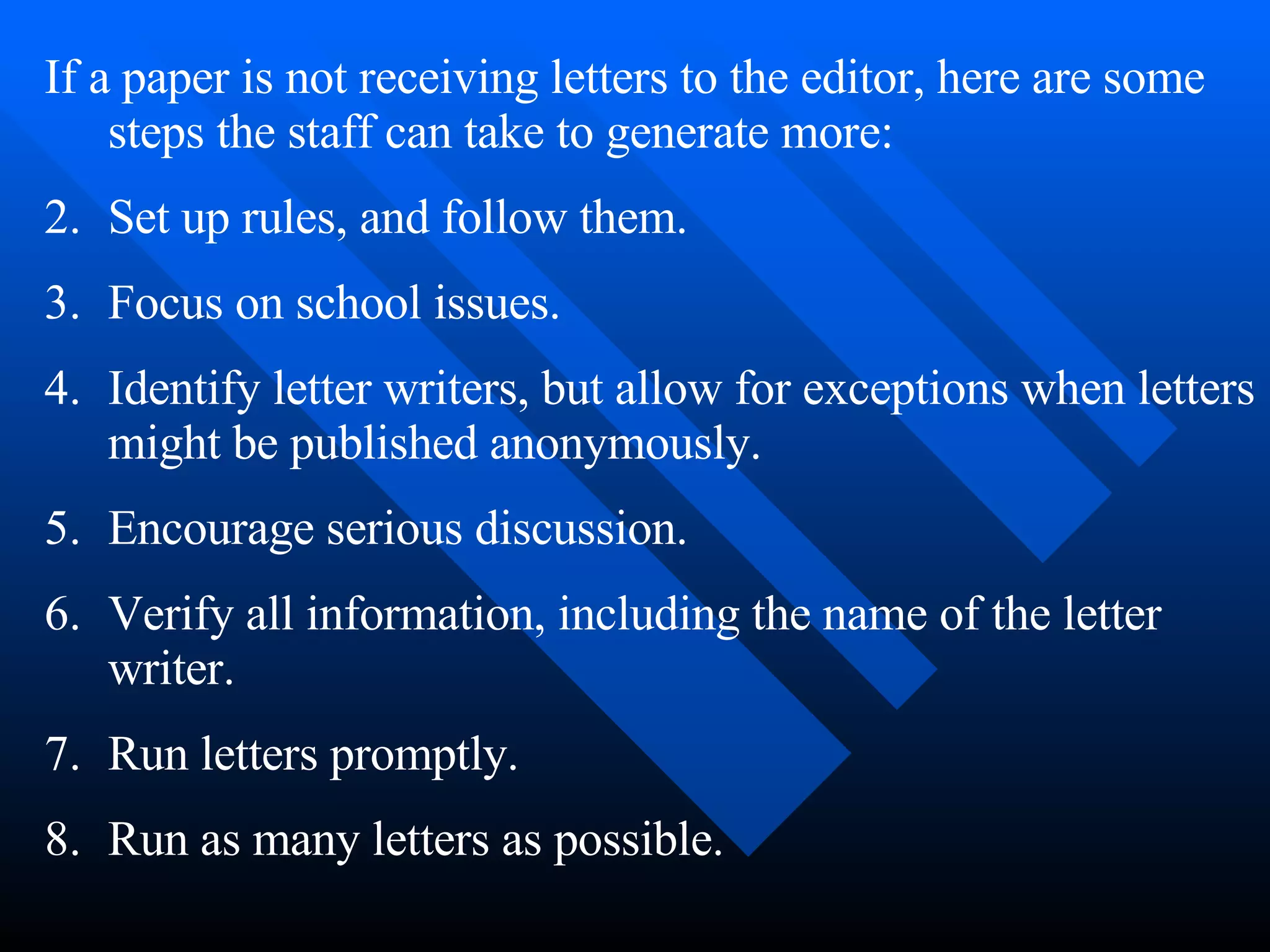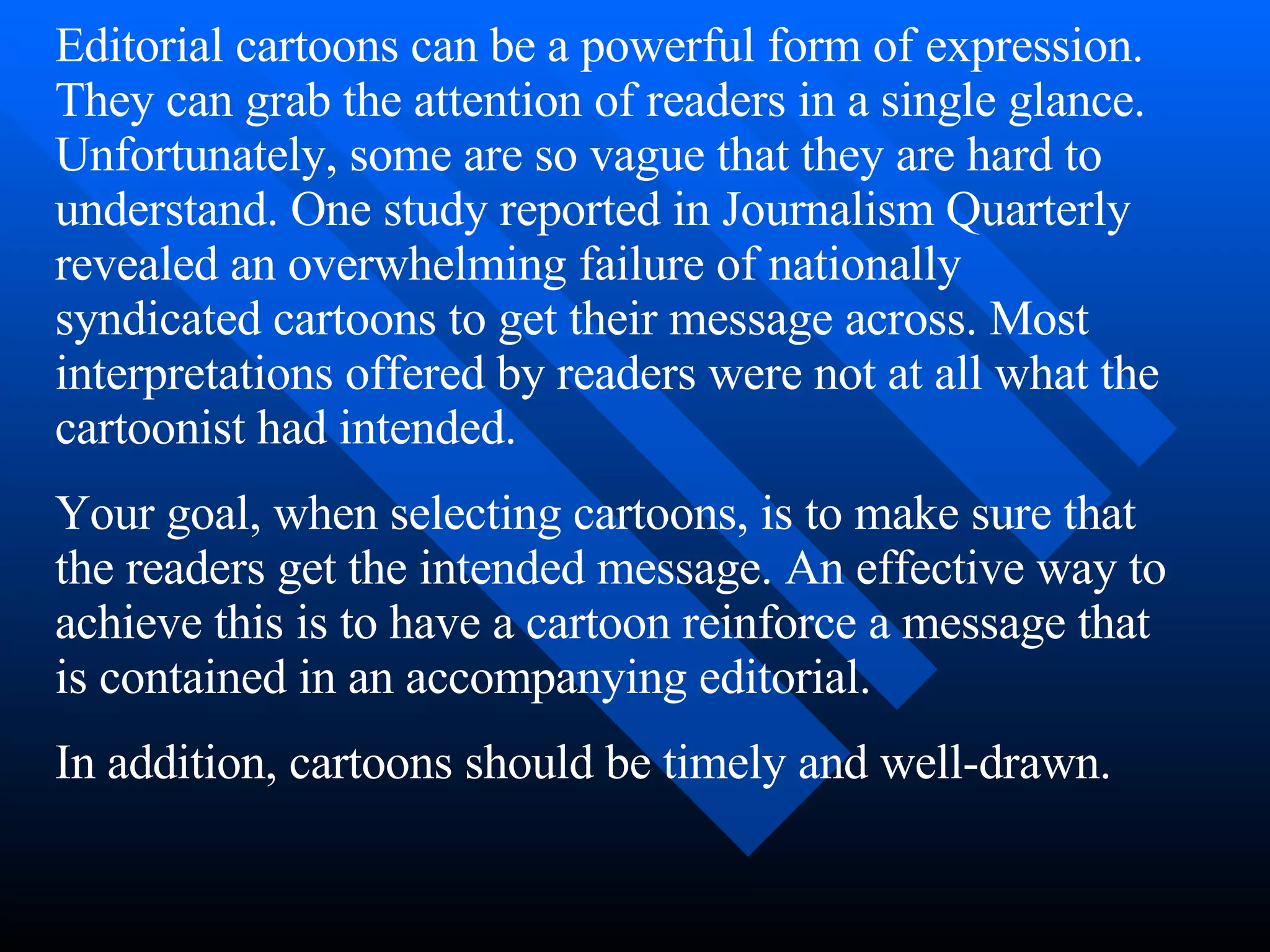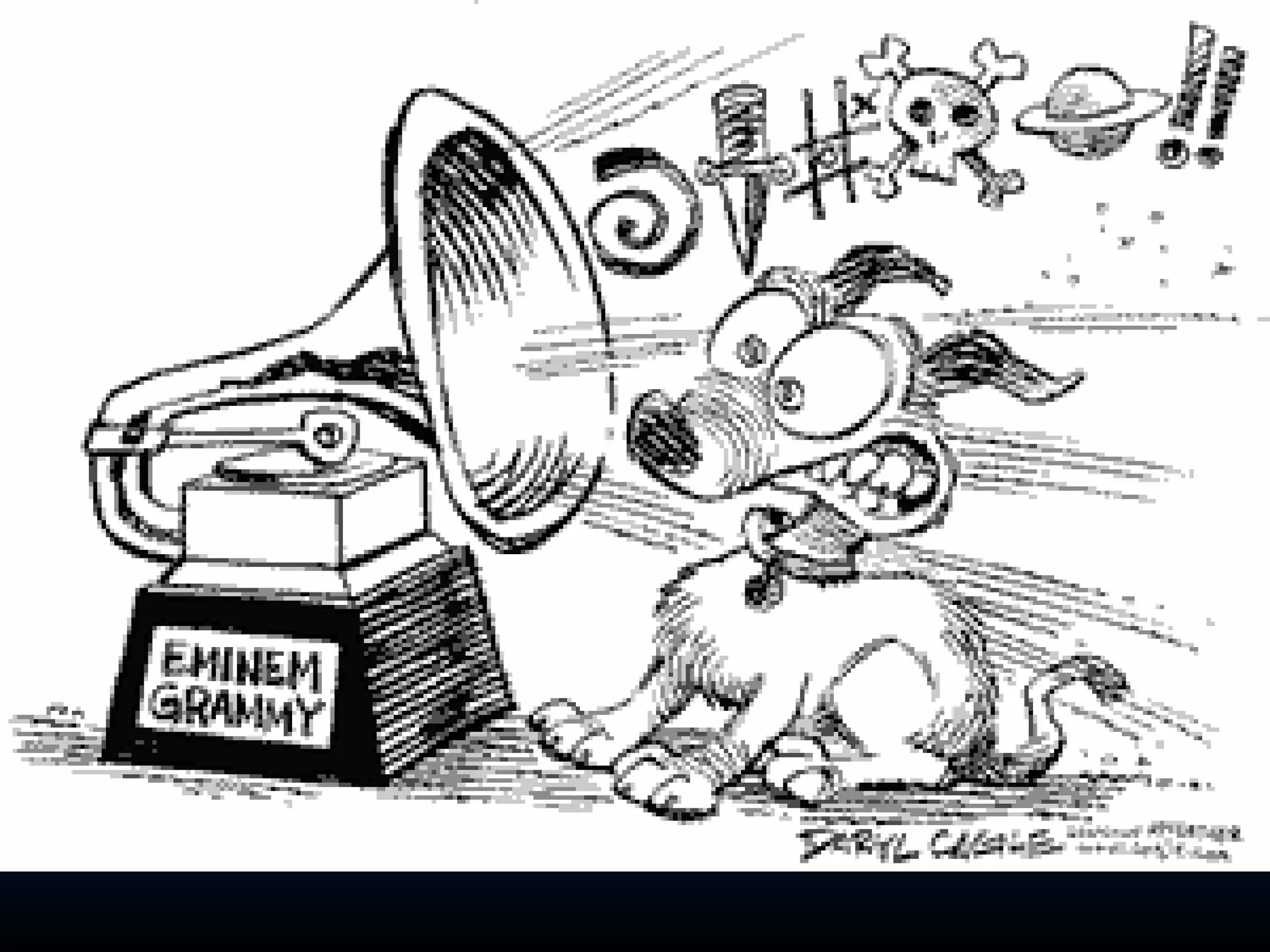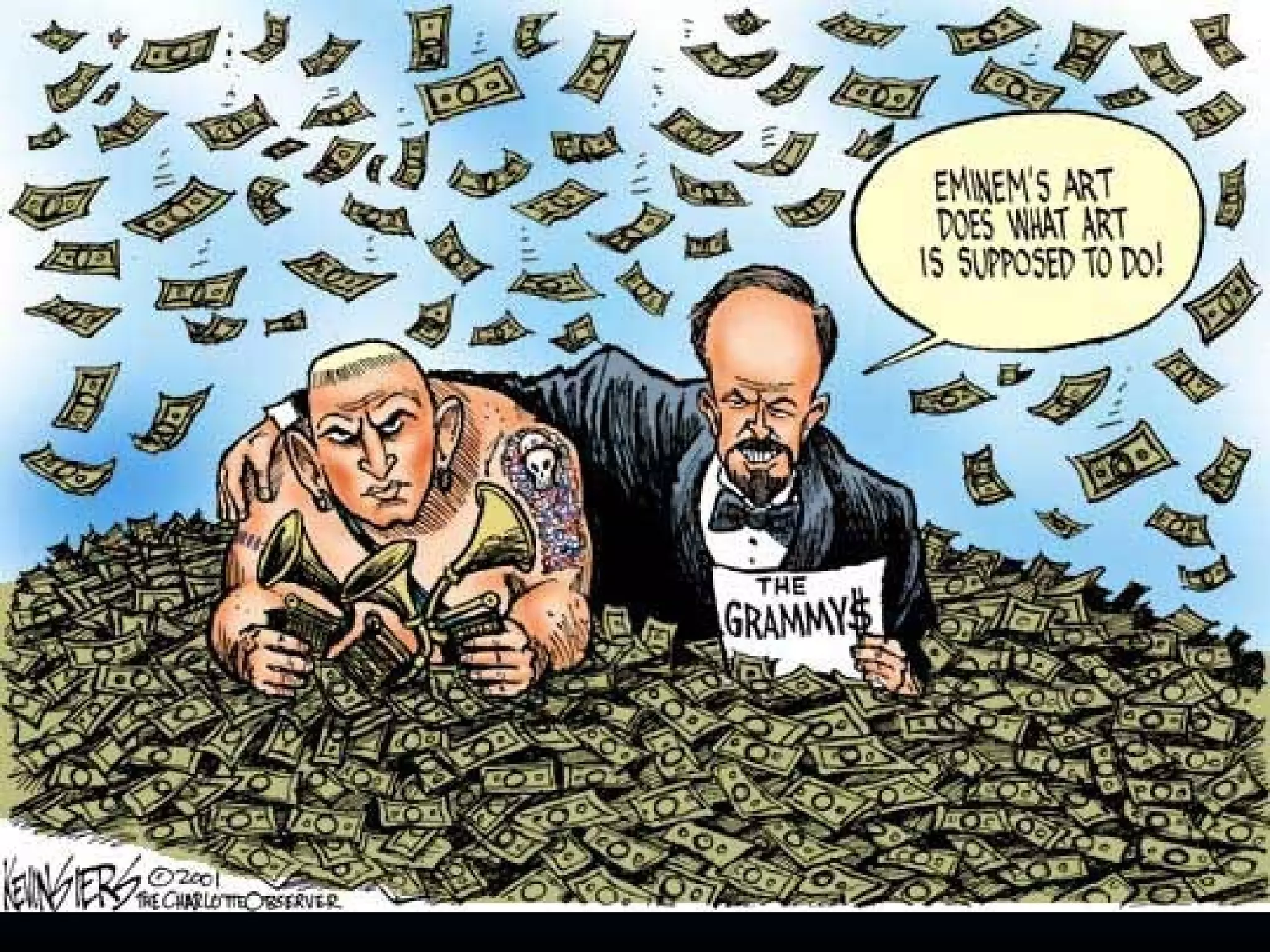This document provides guidance on writing editorials for a student newspaper. It defines key terms like editorial, editorial page, and editorial board. It explains that the editorial board determines the newspaper's stances on issues. There are three main types of editorials: ones that explain issues, ones that evaluate actions/situations, and ones that persuade readers. The document offers tips for writing different types of editorials and involving readers through letters to the editor and opinion features. It also discusses choosing editorial cartoons that effectively express opinions.


